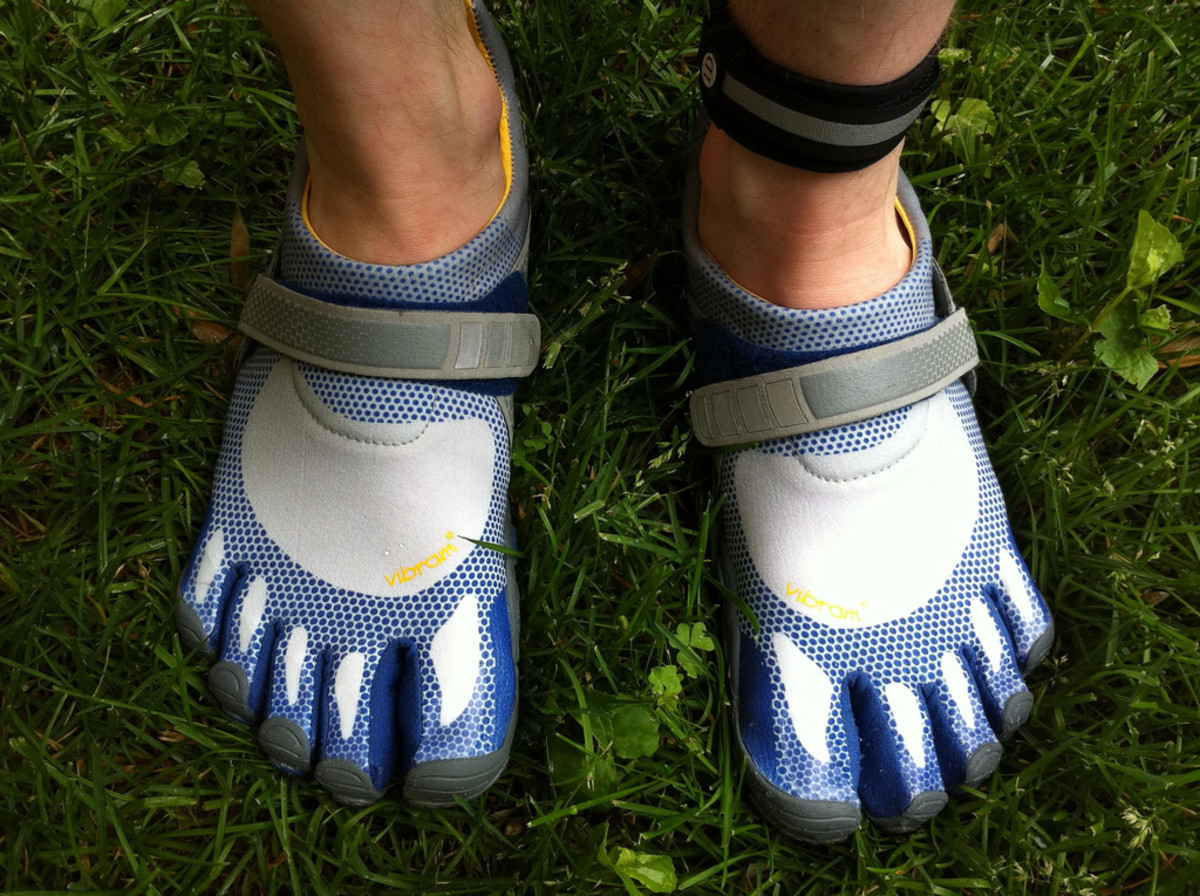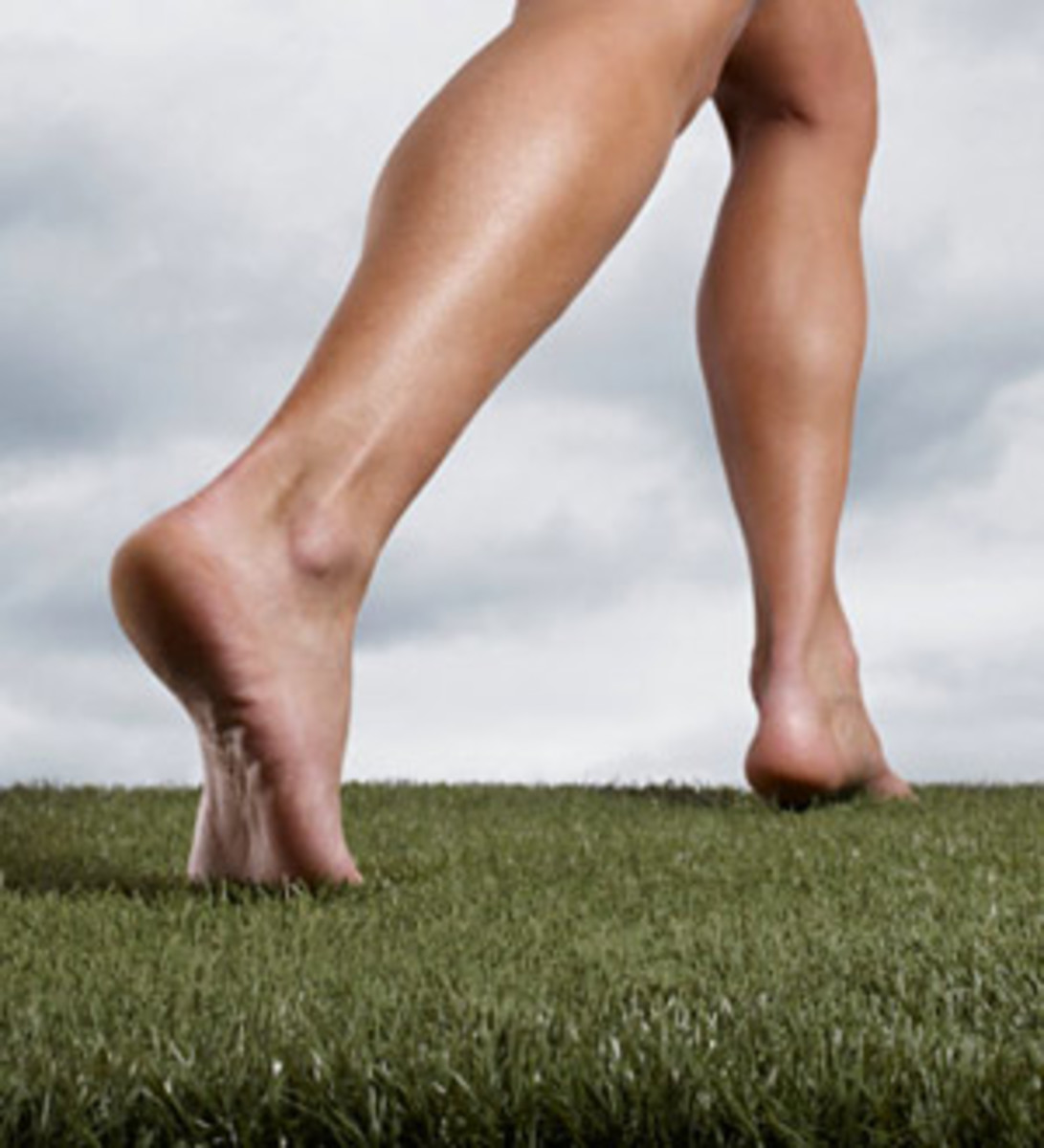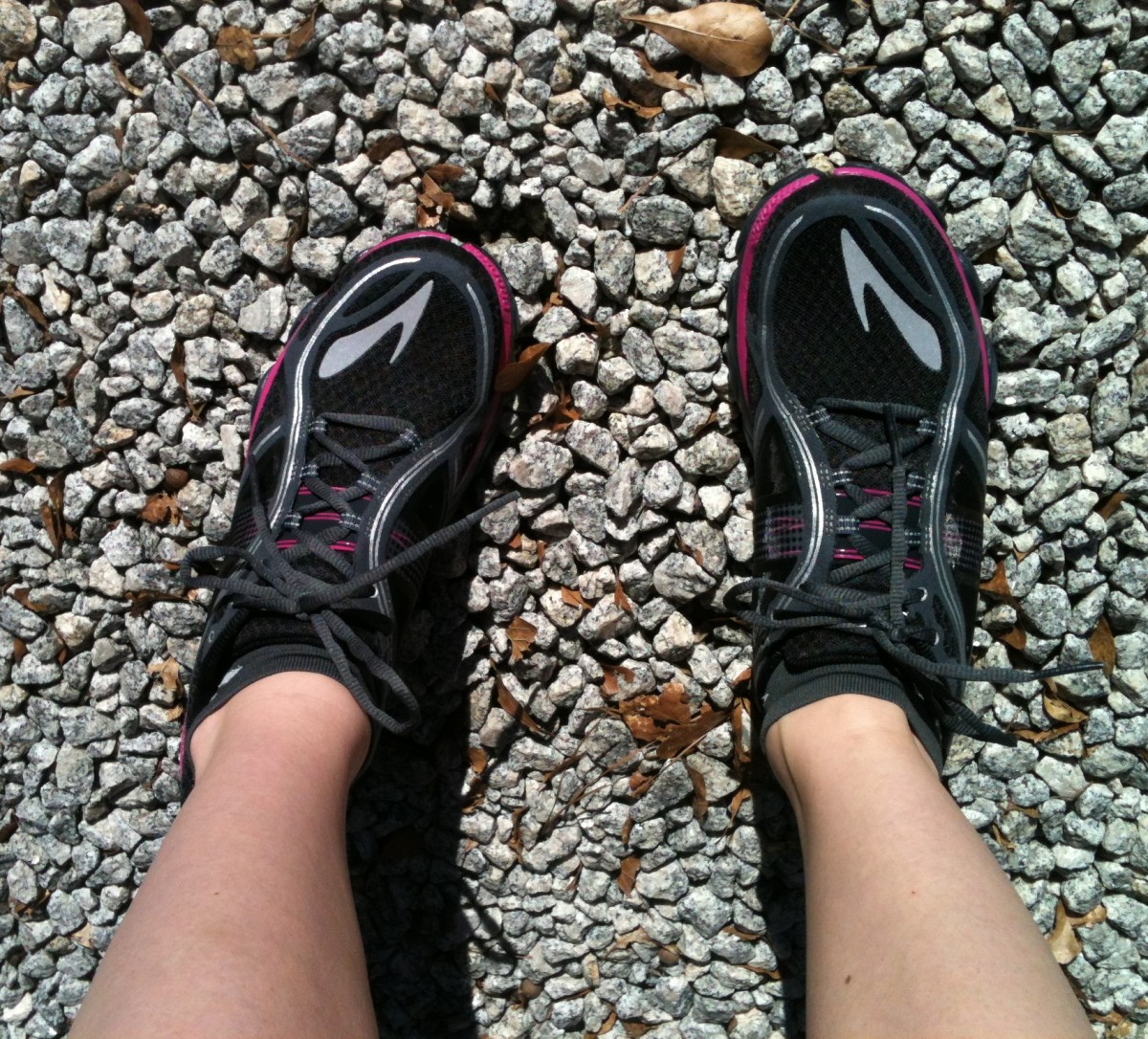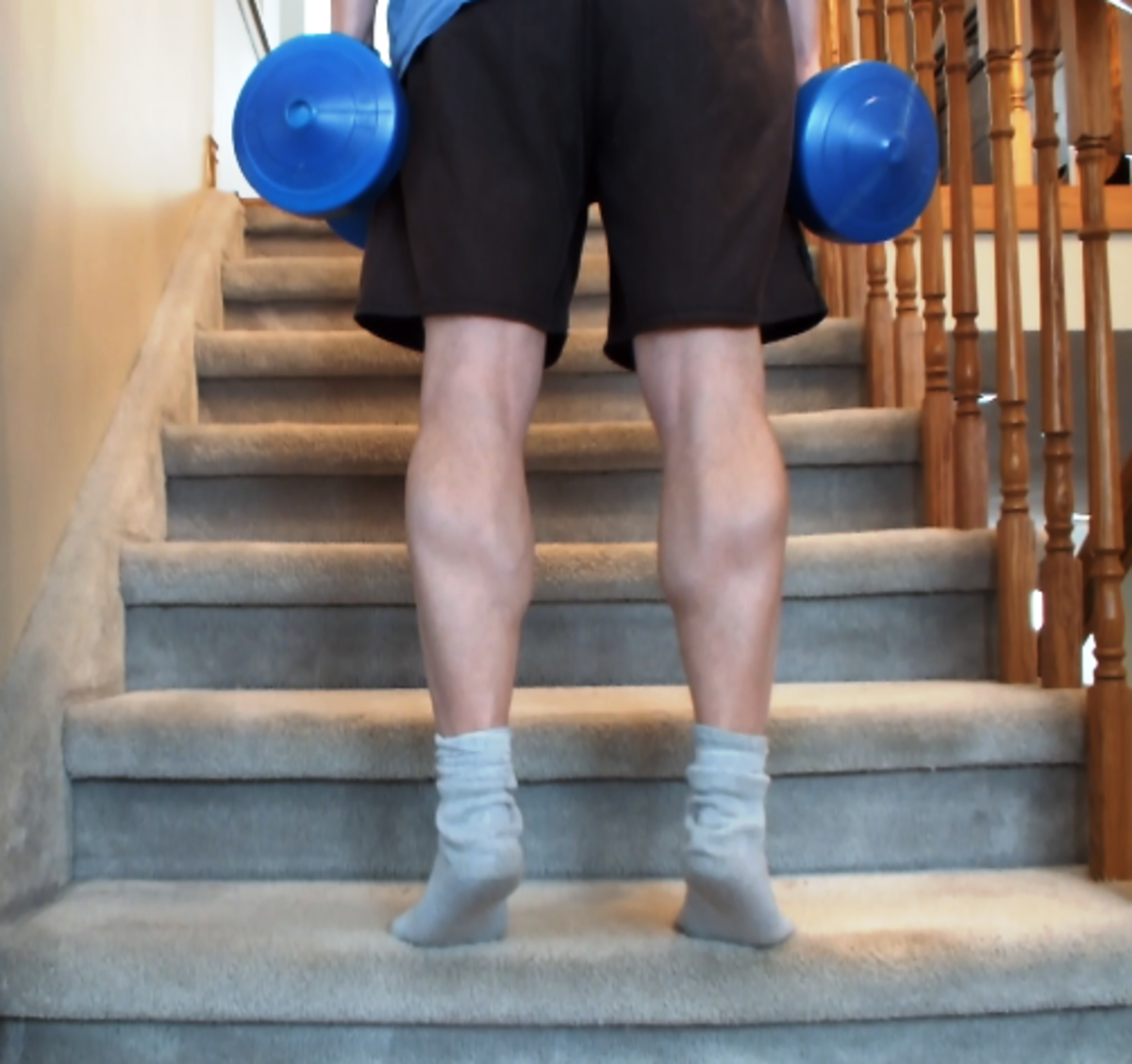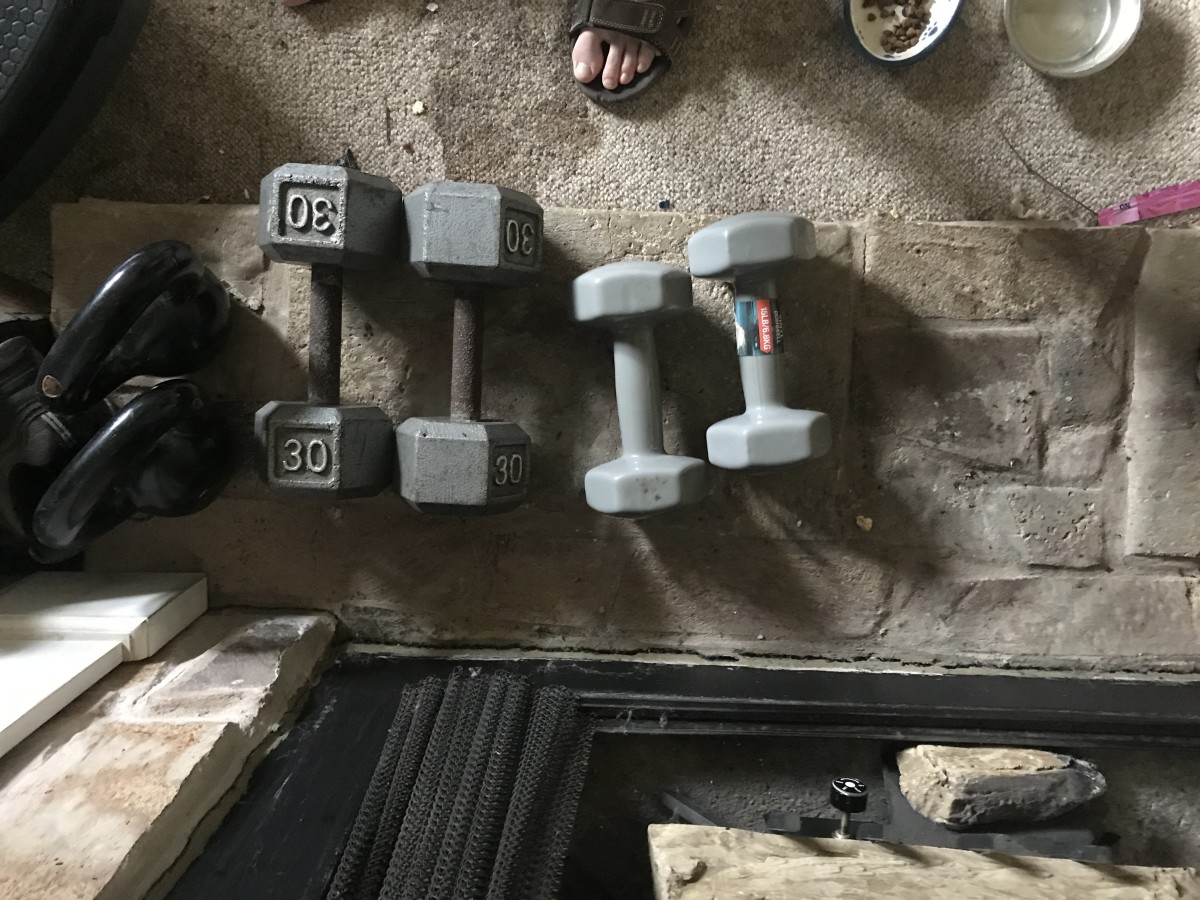Barefoot Running and Minimalist Shoes-A Good or a Bad Thing?
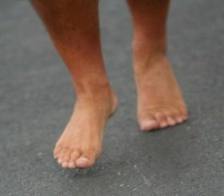
Barefoot training and minimalist footwear have experienced a popularity surge in the past few years, and many companies have produced minimalist shoes to answer the demand. The trend is credited with strengthening the extrinsic and intrinsic foot and ankle muscles that are supposedly neglected by shoes with excessive support.
Strengthening these muscles, in theory, should help prevent common injuries due to weaknesses brought on by too many years of shoe support. Barefoot or minimalist footwear enthusiasts point out that for over 10,000 years, humans didn’t have supportive shoes, if they had any at all.
In an age where it seems everyone has a pair of thick-cushioned running or cross-training shoes in their closet, are the minimalist enthusiasts right? Should we all be going barefoot or running in flat, thin-soled shoes?
Bare Feet/ Vibram FiveFingers
Barefoot running and training is just that, barefoot, unshod. Some folks would prefer a protective layer between their skin and potential ground hazards, however, which is where the Vibram FiveFingers shoe comes in. The ‘shoe’ fits like, well, a glove, but on your foot, and is tough enough to ward off damage from rough ground without offering unnatural support. We will refer to both types as ‘minimalist.’
The benefits of minimalist running are in the way the foot strikes the ground. The heel strike shifts to a forefoot strike, which creates less and slower reactive ground forces to channel back through the body. The result is less impact on the knees, hips, pelvis and spine.
In theory, unshod runners should experience fewer injuries because there is less impact on their body; the theory is sound, but the research data confirming this is still thin. Minimalist runners also believe their training methods strengthen the smaller supporting muscles of the feet and ankles, and they are right. However, running with shoes does this also, just to a lesser degree, and using a different motion.
One reason for common running injuries while wearing shoes is the repetitive and limited action of plantar flexion that can lead to muscle imbalances. Runners who fail to address these imbalances risk developing Achilles tendon issues, shin splints and plantar fasciitis to name a few.
How does one address these muscle imbalances? Try running barefoot or in Vibram FiveFingers, for starters. The forefoot is striking the ground first, so different foot muscles are being used, and the stabilizing muscles are forced to work harder.
Running with Shoes
In an article about the perils of barefoot/minimalist running, one author pointed out the explosion of injuries linked to minimalist training. He interviewed several doctors and physical therapists who confirmed and unprecedented influx of minimalist running injuries.
This does not mean running without shoes is a bad idea, but as one marathoner pointed out, it is a gradual process. An instant switch to running unshod is a bad idea, however. Several common methods for transitioning to minimalist running are suggested in professional literature:
-Start by walking barefoot for short periods of time.
-Start with very short periods of barefoot running; 30 seconds a day after your typical run in the beginning, building up to 5-10 minutes at a time.
-Walk or run on soft surfaces such as grass and sand.
Professionals agree, some people should not be running without solid, supportive shoes and orthotics in certain cases. Among the reasons listed for keeping your shoes on were biomechanical disadvantages such as:
-Weak forefoot stability
-Overpronation
-Supination
-Severe flat feet
-Severely high-arched feet
-Diabetics with poor sensation in their feet
Regardless of who tries minimalist running, the golden rule is to proceed with caution at a gradual pace.
MBT and Shape Ups
Another facet of minimalist footwear is not minimal at all. The unstable MBT and Skechers “Shape-Ups” shoes are examples of shoes with a lot more, but designed to support the foot a lot less. The shoe’s bottoms have an anterior to posterior curvature, a ‘rocker’ that is designed to turn everyday flat walking surfaces into unstable challenges.
Even standing is a challenge in these shoes. So far, both anecdotal and initial scientific research supports company claims that this design strengthens the smaller and often neglected stabilizing foot and ankle muscles. Over time, stronger feet and ankles should perform better and resist common injuries.
Real Benefits?
It is certainly possible to strengthen the foot and ankle muscles to the point where shoes can be discarded for life. However, people with problem feet should see their doctor first. Everyone starting barefoot training needs to transition gradually to prevent injury. As one coach put it, any sudden change in the training program should begin with very little volume and introduced over an extended time period.
MBT and Shape Up shoes, intended to impart the same benefits as going barefoot, should also be worn for short periods of time at first. As with minimalist footwear, these unstable ‘rocker’ shoes can be beneficial for strengthening neglected foot and ankle muscles.
What if you’re not willing to part with those stylish running shoes? Then keep on running! Just be sure to keep the muscles balanced with additional exercises when you are not on the road or track.
More Great Exercise and Fitness Articles
- Bodyweight Daily
Learn great bodyweight workout routines for staying strong and flexible. A must for every runner! - Medicine Ball Exercises and Workouts
Use medicine balls to add more to your strength and conditioning workouts. Medicine balls are a time-honored exercise tool for increasing power and burning fat. An essential tool for the home gym. - Interval Training is still the Best Fat Burning Method
Learn about why interval training is great for getting in shape and losing weight, but only in moderation. - Muscle Injury, Muscle Strain, Muscle Pain!
Learn about soft tissue injuries, what actions to take when you experience one, and how the muscles heal from these injuries. - The Kettlebell Dumbbell Relay Workout for Strength and Endurance
Need an extreme kettlebell challenge? Here are two great interval workouts using kettle bells and other tools to burn fat and blast your body into shape. Do this kettlebell workout routine on your own or grab a partner for a relay! - Pullup Bars for the Home Gym
Which pullup bars should you be using? Which ones are best for the home gym? Find the perfect one for you right here. - Which Gymnastics Rings Trainer Should you Choose?
Gymnastics rings are one of the best pieces of functional workout equipment you can buy. But with so many on the market, which one should you choose? Read on to find our picks. - Buy a TRX fitness system online
The TRX suspension trainer is one of the smartest fitness products to hit the market in decades. Find out which one to buy and where you should be shopping.


